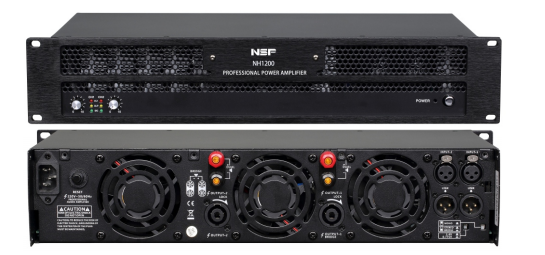Advancements in Class D Amplifier Technology
The world of audio amplification has witnessed remarkable transformations over the years, and Class D amplifiers stand at the forefront of this innovation. Known for their efficiency, compact size, and excellent performance, Class D amplifier technology has redefined how we experience sound. From portable devices to high-end audio systems, advancements in this field have opened doors to superior audio reproduction with minimal energy consumption.

The Evolution of Class D Amplifier Technology
A Brief History of Class D Amplifiers
Class D amplifiers, often referred to as “digital amplifiers,” were introduced as a solution to the inefficiencies of traditional analog amplifiers. Unlike Class A or Class AB designs, which dissipate significant energy as heat, Class D amplifier technology employs a switching mechanism to amplify audio signals. This innovation drastically improves energy efficiency and reduces thermal output.
The Shift to Digital Signal Processing
Early iterations of Class D amplifiers faced challenges like signal distortion and limited frequency response. However, the incorporation of digital signal processing (DSP) has resolved many of these issues, enabling these amplifiers to deliver crystal-clear sound across various applications.
Key Advancements in Class D Amplifier Design
Improved Efficiency and Thermal Management
One of the most significant breakthroughs in Class D amplifier technology is the enhancement in efficiency. Modern designs achieve power efficiencies exceeding 90%, making them ideal for applications where energy conservation is crucial. Advanced cooling mechanisms and lower thermal output also allow manufacturers to create compact devices without compromising performance.
GaN Transistors: A Game-Changer
The introduction of gallium nitride (GaN) transistors has been a pivotal development in Class D amplifiers. Compared to traditional silicon-based transistors, GaN transistors offer:
- Faster switching speeds
- Reduced energy losses
- Lower heat generation
These features contribute to improved audio fidelity and compact form factors.
Enhanced Audio Quality
In the past, Class D amplifiers were criticized for producing audible noise and distortion, especially at higher frequencies. Today, advancements in circuit design and modulation techniques have significantly mitigated these problems.
Feedback Loop Optimization
Modern amplifiers incorporate advanced feedback systems that adjust for any discrepancies in real-time. This ensures accurate reproduction of the input signal, resulting in cleaner and more dynamic audio output.
Pulse Width Modulation (PWM) Refinements
PWM, a core principle of Class D amplifier technology, has seen significant refinements. Innovations in PWM algorithms have minimized harmonic distortion, enabling amplifiers to achieve higher fidelity sound reproduction.
Applications of Class D Amplifier Technology
Portable Audio Devices
The demand for lightweight and portable audio devices has skyrocketed, and Class D amplifiers are at the heart of this trend. Their compact size and low power consumption make them perfect for smartphones, Bluetooth speakers, and wearable devices.
Home Theater Systems
For home theaters, Class D amplifiers deliver the power needed to drive multiple channels while maintaining clarity and efficiency. They provide a seamless cinematic experience with deep bass and crisp highs.
Automotive Audio
Automotive audio systems benefit significantly from Class D amplifiers due to their ability to operate efficiently in confined spaces. These amplifiers deliver powerful sound without placing excessive demands on a vehicle’s electrical system.
Professional Audio Equipment
In professional settings, such as concert venues and recording studios, Class D amplifiers provide high-output power while minimizing heat and energy consumption. Their reliability and performance make them a go-to choice for audio professionals.
The Role of Class D Amplifiers in Sustainability
Energy Efficiency
With global efforts to reduce energy consumption, Class D amplifier technology plays a vital role in creating eco-friendly audio solutions. Their high efficiency reduces energy waste, making them a sustainable choice for both consumers and manufacturers.
Reduction in Material Usage
The compact nature of Class D amplifiers requires fewer raw materials for production. This not only lowers manufacturing costs but also contributes to reduced environmental impact.
Challenges and Future Prospects
Addressing Interference Issues
One of the challenges in Class D amplifier technology is managing electromagnetic interference (EMI), which can affect nearby electronic devices. Researchers are exploring advanced shielding techniques and refined circuit designs to mitigate this issue.
AI and Machine Learning Integration
The future of Class D amplifiers may involve integrating artificial intelligence and machine learning for adaptive audio tuning. These technologies could allow amplifiers to analyze and optimize audio output in real-time, providing a personalized listening experience.
Expanding Applications
As advancements continue, Class D amplifiers are expected to find applications beyond audio, including renewable energy systems, robotics, and medical devices, where efficient power management is critical.
The advancements in Class D amplifier technology have revolutionized the audio industry, offering unmatched efficiency, superior sound quality, and versatility across various applications. From portable devices to professional audio systems, these amplifiers cater to the evolving demands of modern consumers while aligning with sustainability goals.
As innovation continues to drive the field forward, the potential of Class D amplifiers appears limitless. Whether you’re an audiophile seeking pristine sound or a manufacturer aiming for energy-efficient solutions, Class D amplifiers stand as a testament to the power of cutting-edge engineering. By embracing these advancements, we pave the way for a future where exceptional audio experiences are accessible to all.